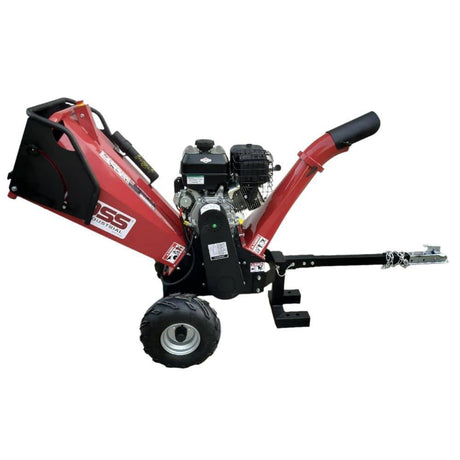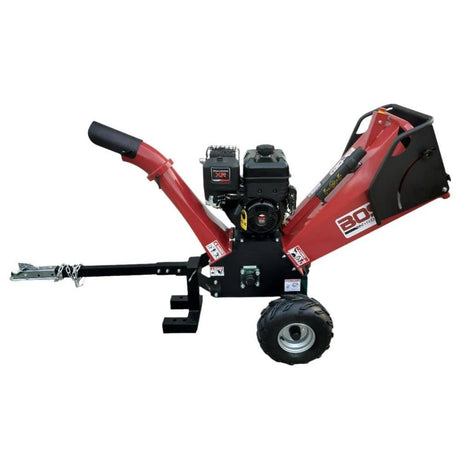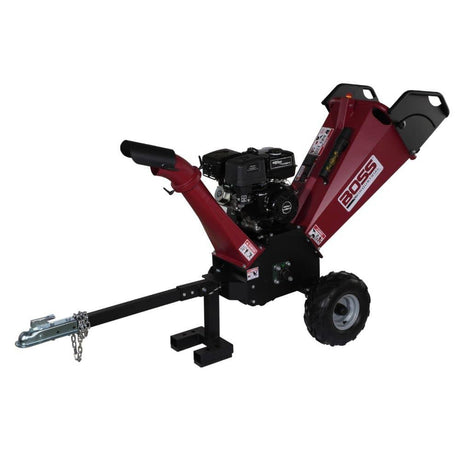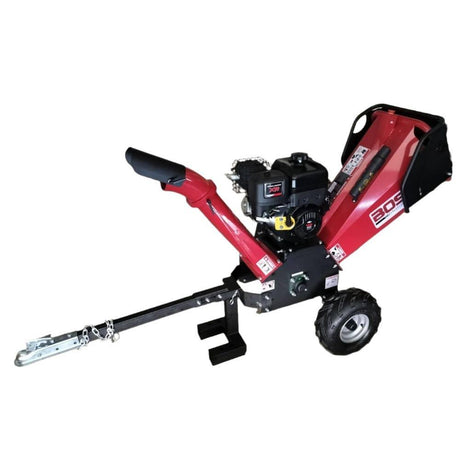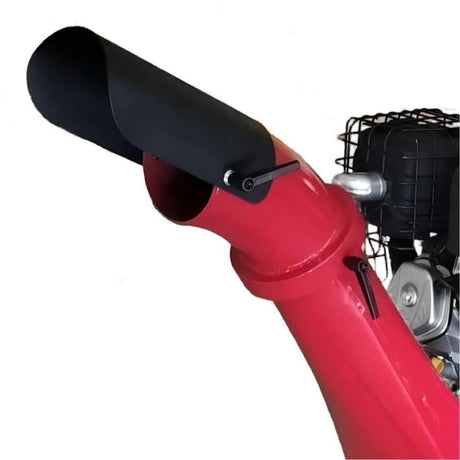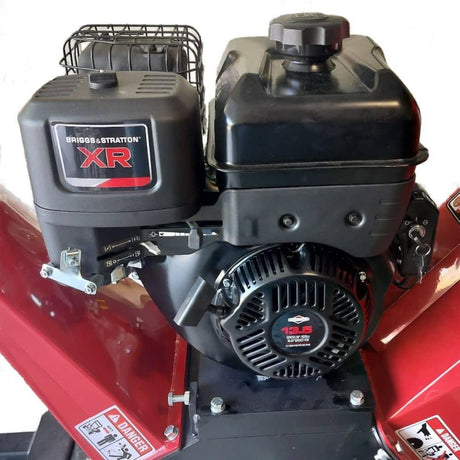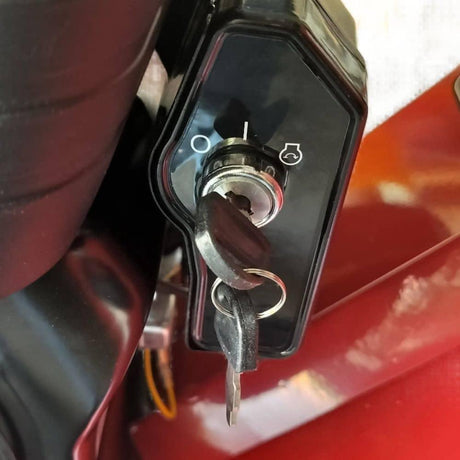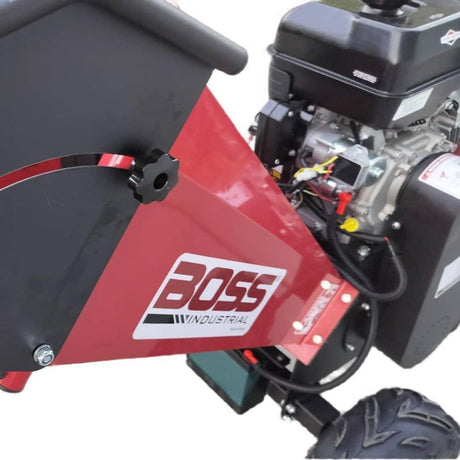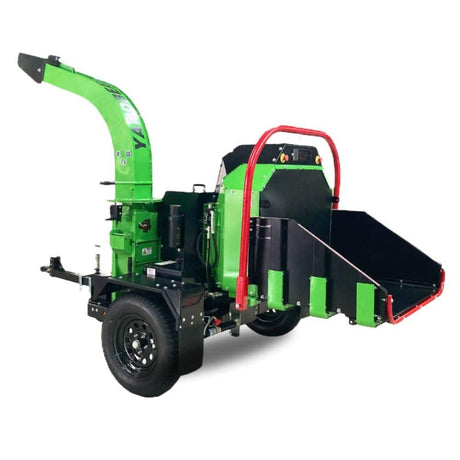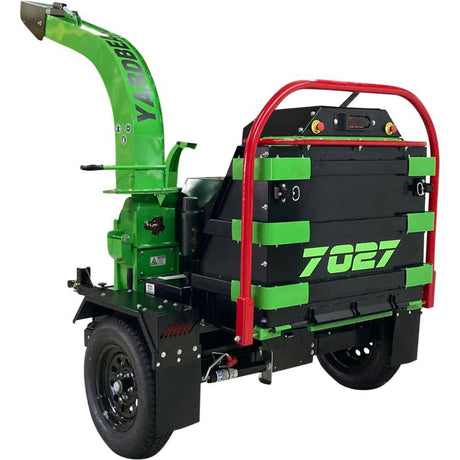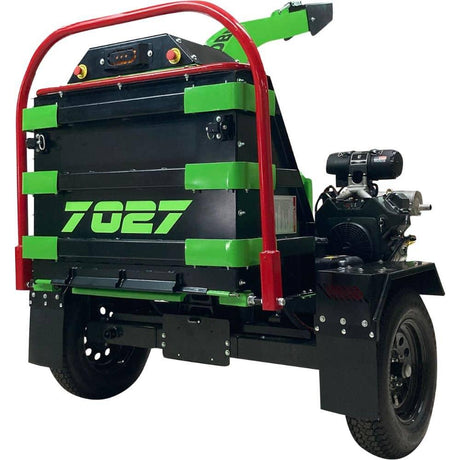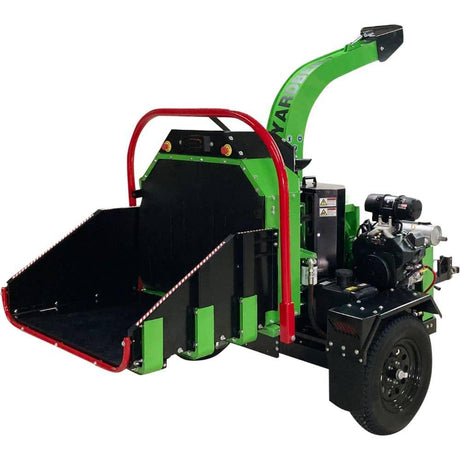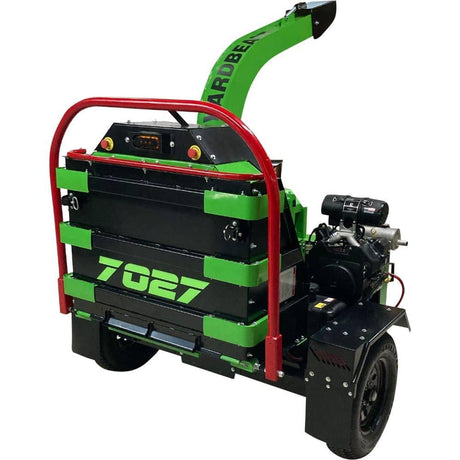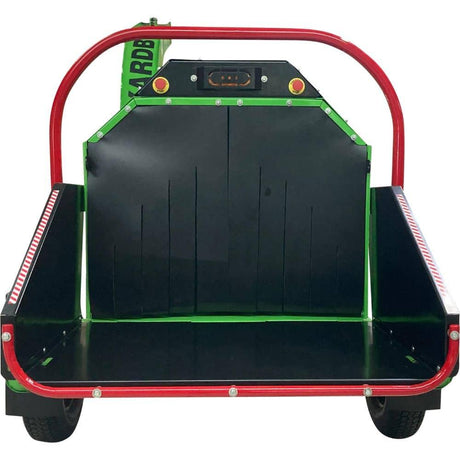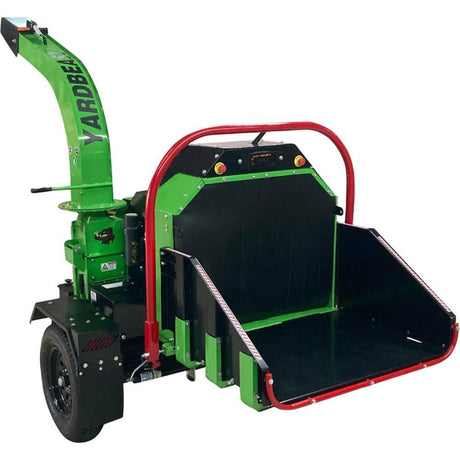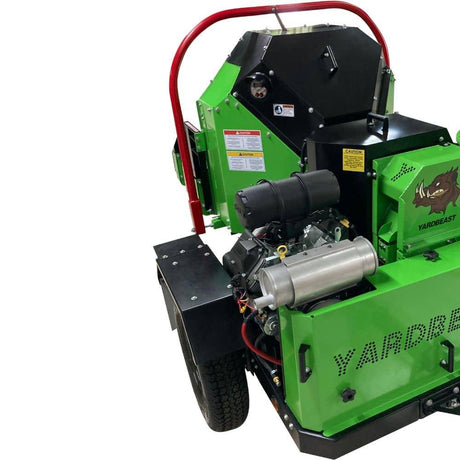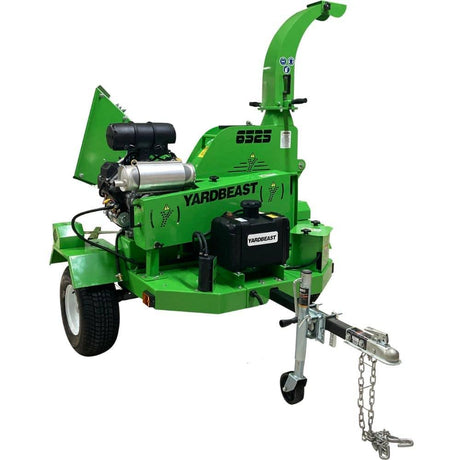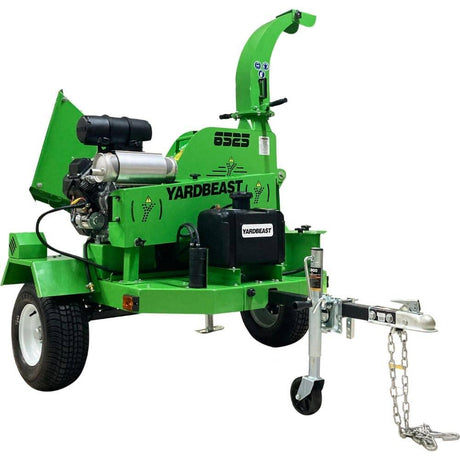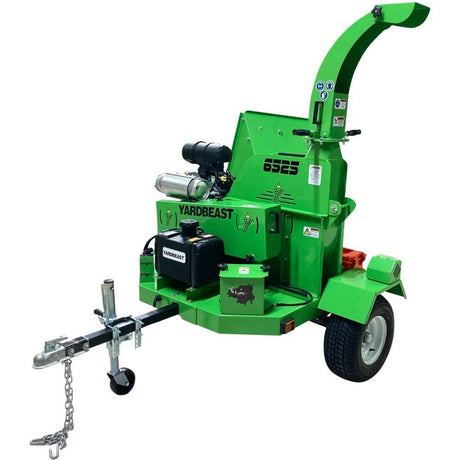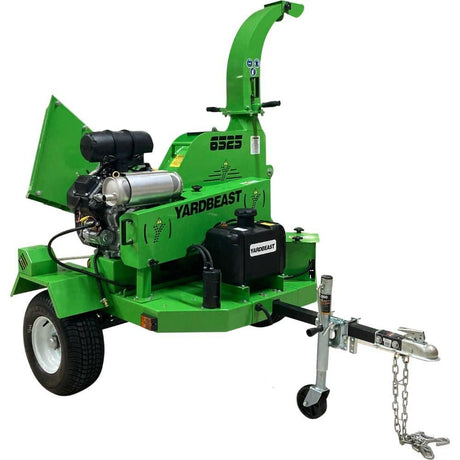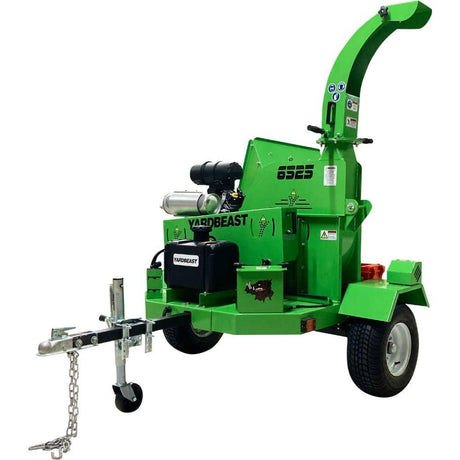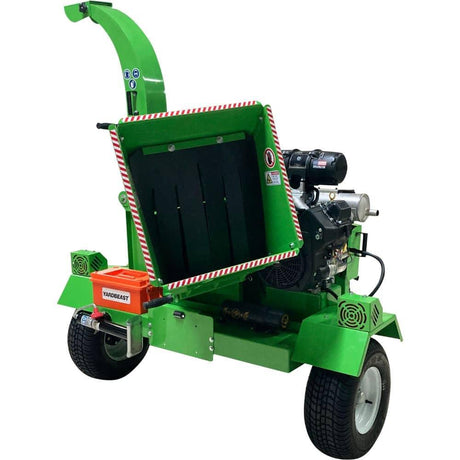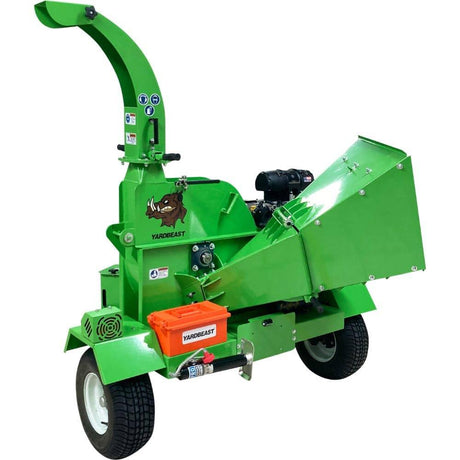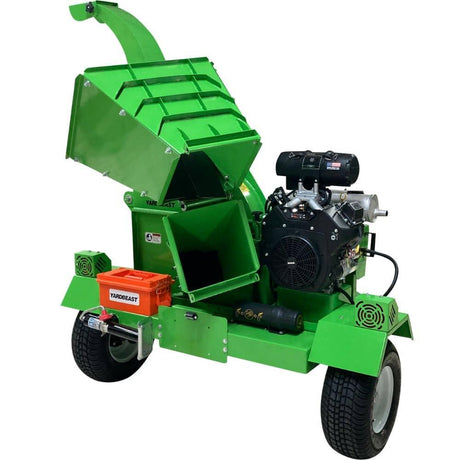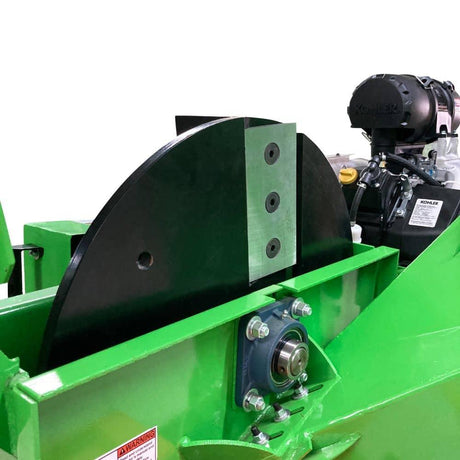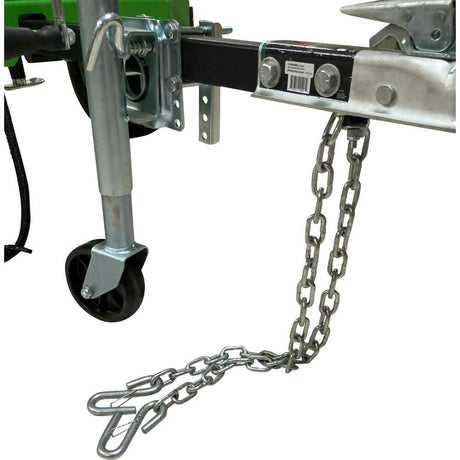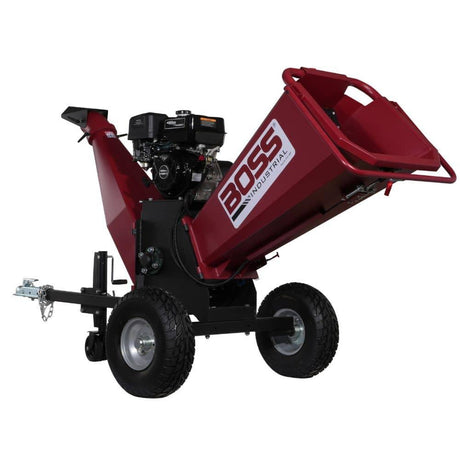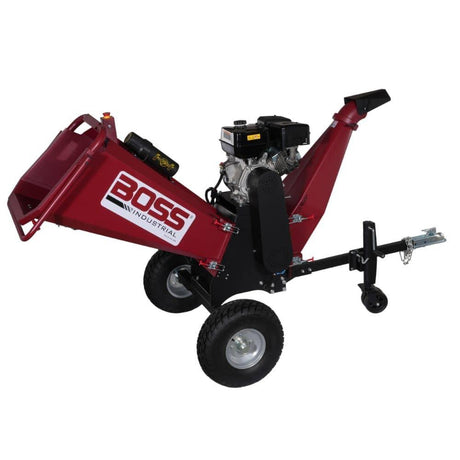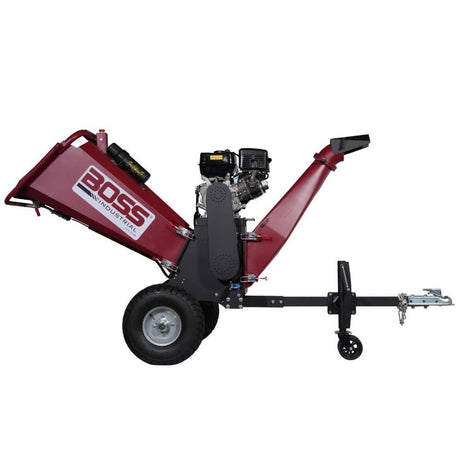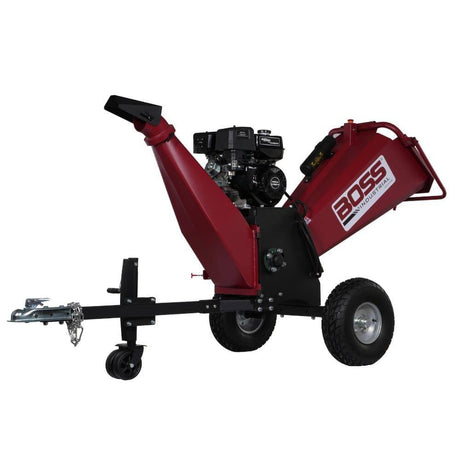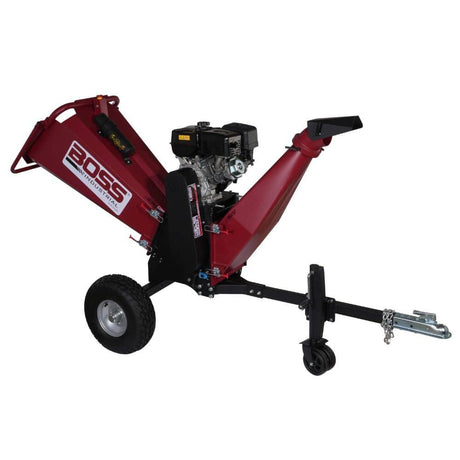Boss Industrial
Boss Industrial CGR50 5-Inch 14hp Gas Briggs & Stratton Powered Chipper Shredder
$2,399.99Unit price /Unavailable- 9% off
Yardbeast
Yardbeast 7027 7-inch Commercial Gas Wood Chipper
$21,879.99$23,999.99Unit price /Unavailable - 6% off
Yardbeast
Yardbeast 6525 6.5-Inch Commercial Gas Wood Chipper
$11,467.89$12,199.89Unit price /Unavailable Boss Industrial
Boss Industrial CGR60 6-Inch 15hp Gas Briggs & Stratton Powered Chipper Shredder
$2,999.99Unit price /Unavailable
Shop Commercial Wood Chippers for Professional-Grade Performance
What Makes a Wood Chipper Commercial-Grade?
A commercial wood chipper is designed for one thing: nonstop, high-volume yard waste processing. It's not built for the occasional backyard cleanup—this is a professional wood chipper engineered for daily use in the field.
Here's what sets it apart:
- 5" to 7" branch capacity
- 420cc OHV gas engines or larger
- Heavy-duty steel construction, built to withstand jobsite abuse
- Commercial-duty chipper knives with replaceable, hardened blades
- Designed for contractors, arborists, and landscaping businesses
Whether you're clearing storm debris or running a tree removal business, this level of performance is a must.
Who Should Use a Commercial Wood Chipper?
These machines are ideal for:
- Tree service companies processing limbs and trunks daily
- Landscaping businesses dealing with brush, palm fronds, and seasonal overgrowth
- Contractors looking for a reliable tool on jobsite cleanups
- Large property owners maintaining acreage or fire mitigation zones
- Crews who need a wood chipper for business use, not weekend projects
If you're making piles of debris disappear every day, you need a commercial chipper shredder that keeps up.
When to Choose a Commercial Model Over Residential Units
Here's when it's time to upgrade:
- You're chipping branches larger than 3 inches
- You work with dense wood like oak or eucalyptus
- You need speed and output volume, not just convenience
- Your business relies on equipment that can run all day without issue
Unlike a residential unit, a pro-grade wood chipper offers centrifugal clutches, dual-blade or drum-style systems, and components built to last—perfect for processing branches and limbs in bulk.
Explore Our Best-Selling Commercial Wood Chippers
Gas-Powered Chippers with High Horsepower Engines
Our top models run on high-horsepower gas engines, usually 420cc OHV, delivering the torque you need for thick limbs and continuous output. These gas-powered commercial chippers:
- Start reliably with recoil or electric start systems
- Handle wet wood, hardwood, and large volume material
- Work off-grid, with no power source required
Perfect for daily commercial use in rural, remote, or on-site conditions.
Towable, Self-Feeding, and Drum-Style Options
Depending on your crew's workflow, we offer:
- Towable wood chippers with a 2" ball hitch and DOT-compliant towing kits
- Gravity-feed or self-feeding chippers to reduce manual labor
- Drum-style chippers for smoother, quieter, high-capacity processing
These configurations make a difference for teams that chip all day. Whether you're clearing a single lot or rotating through multiple jobsites, mobility and feed efficiency are everything.
Capacity Ratings: Branch Diameter and Output Volume
Not all jobs need the same size chipper. Our machines offer:
- 5-inch chipping capacity for light-to-medium pro use
- 6-inch or 7-inch commercial tree chippers for larger crews and tough materials
- Adjustable discharge chutes for controlled output and directional placement
For most landscaping wood chipper applications, a 6" capacity model hits the sweet spot between performance and maneuverability.
Blades, Flywheel Design, and Construction Quality
Every part of a commercial wood chipper matters. Here's what to look for:
- Hardened steel dual or quad blades for long service life
- Direct drive or belt-driven flywheels engineered for torque and momentum
- Heavy-duty steel housing and chip chamber for impact resistance
- Maintenance-free bearings to reduce downtime on the job
If you're counting on a machine every workday, these aren't extras—they're non-negotiables.
Choosing the Right Commercial Wood Chipper for Your Business
Capacity vs. Jobsite Needs: 3" to 7" Diameter Branches
Start with your most common branch size. Are you mostly clearing brush and palm fronds, or taking down full limbs from mature trees?
Here's a quick guide:
- 3"-4" chippers: Great for light commercial use or tight access areas
- 5"-6" chippers: The sweet spot for most landscaping companies and tree services
- 7" capacity: Best for heavy-duty jobs, larger crews, or storm cleanup where volume spikes
If you're removing logs and limbs daily, a high-capacity commercial wood chipper pays for itself in hours saved. Oversizing your chipper (slightly) also extends its life—less stress per pass.
Engine Type, Fuel Efficiency, and Safety Features
Power matters, but so does efficiency. Most commercial-grade chippers run on 420cc gas engines or larger—tuned for both torque and long run times.
Look for:
- OHV engines: More power, cooler running, longer life
- Centrifugal clutches: Engages blades only when needed—adds safety, reduces wear
- Emergency shut-offs and guarded intake chutes
- Low oil sensors to protect the motor during long shifts
You want a machine that's powerful, fuel-efficient, and field-safe—because downtime on the job costs more than fuel.
Portability, Tow Hitch Compatibility, and On-Site Access
A commercial wood chipper has to go where the work is. Whether it's a residential back lot or a large property, access is key.
Look for:
- 2" ball hitch with DOT-compliant towing hardware for road transport
- Compact trailer width to fit through gates or alleyways
- Large pneumatic tires for traction on grass, gravel, or slopes
- Rotating discharge chute for controlled chip placement
If you're moving between sites all day, a trailer-compatible chipper shredder with quick setup is worth every dollar.
Commercial vs. Residential Wood Chippers: What's the Difference?
Durability, Output, and Usage Frequency
The jump from residential to commercial is big. Here's what you're really paying for:
| Feature | Residential Chipper | Commercial Wood Chipper |
|---|---|---|
| Capacity | 1.5–3 inches | 5–7 inches |
| Engine | Small electric or under 250cc gas | Gas-powered 420cc OHV and up |
| Frame & Build | Thin sheet metal | Heavy-duty steel construction |
| Run Time | 15–30 minutes max | All-day use, daily |
| Blade System | Single blade | Dual-blade or drum-style with flywheel |
| Intended Use | Occasional yard cleanup | Professional tree and landscape crews |
Simply put, a residential chipper can't match the speed, output, or durability of a commercial chipper shredder. It's not designed to.
Which Type Fits Your Workload and Business Goals?
Choose a residential unit if:
You're clearing your own yard occasionally
You mostly chip twigs, leaves, or soft branches
You don't need to tow or operate all day
Choose a commercial wood chipper if:
- You're in the field regularly or run a crew
- You process limbs 4" and up
- You need a machine that performs all day, every day
- Your work requires professional-grade gear to stay profitable
For tree services, contractors, and landscapers, commercial isn't overkill—it's the standard. The right machine won't just make the job easier—it will make your business more efficient.
Frequently Asked Questions (FAQs)
What Size Branches Can a Commercial Wood Chipper Handle?
What Size Branches Can a Commercial Wood Chipper Handle?
Most commercial wood chippers handle branches from 3 inches up to 7 inches in diameter, depending on the model. Here's a general breakdown:
- 5-inch chippers: Ideal for mixed use—tree limbs, storm debris, general landscaping
- 6-inch chippers: Built for tougher workloads, including dense hardwoods and large volumes
- 7-inch chippers: Designed for tree removal professionals handling trunk limbs and full-scale cleanups
If you're running a tree service or landscaping company, a high-capacity wood chipper with at least 6" diameter capability is your safe bet for day-to-day versatility.
Are Towable Commercial Wood Chippers Road Legal?
Are Towable Commercial Wood Chippers Road Legal?
Yes—if the unit includes DOT-compliant features. Many of our towable commercial chippers are designed to be pulled behind a truck or UTV, but here's what you need for legal highway towing:
- 2" ball hitch tow bar
- DOT-approved tires
- Tail lights and reflectors
- Safety chains
If your chipper is missing any of these, it's limited to off-road or private property use. A trailer-compatible chipper shredder with full DOT compliance is a must if you're moving between jobsites.

